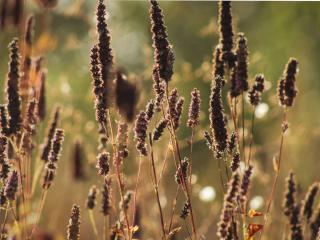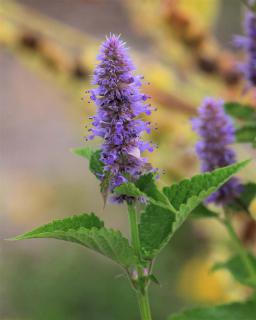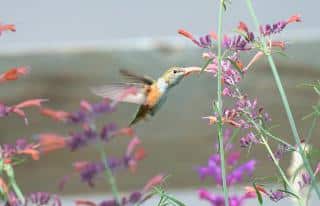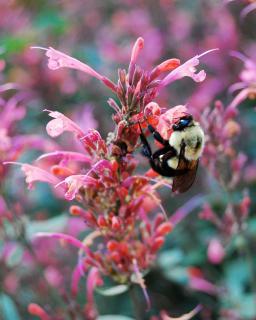

Agastache is a plant that boasts many assets. Its appeal lies in its foliage, flowers and therapeutic properties.
Main Agastache facts
Name – Agastache
Family – Lamiaceae
Type – perennial
Height – 12 to 48 inches (30 to 120 cm)
Exposure – full sun
Soil – light, well-drained
Blooming – May to October
Let’s take a look at how to grow Agastache and get to rediscover this plant.
Agastache is a plant that will do well in almost every setting.
You can plant agastache starting in October and all the way to May-June, keeping a distance of 10 to 12 inches (25 to 30 cm) between plants.
If sowing from seed, sow agastache during the month of March in a sheltered place.
You can propagate agastache in spring or fall through crown division. This ensures that new plants will resemble the initial mother plant.
Another technique is to save seeds and then sow them. New seedlings that result might not grow up to be exactly like the mother plant. This is due to cross-pollination: agastache very easily fertilizes with pollen from other varieties. So if the pollen came from a different type of agastache, a new variety might appear!
It helps to “stratify” the seeds.
This is because they need to “feel” that Winter is over before sprouting again – if not, they’d sprout in Fall and quickly die of frost in Winter. On a chemical level, the cold helps some compounds develop which trigger germination in Spring.
To stratify agastache seeds:
 Use an airtight tupperware or zip-seal bag. Choose a small one so it doesn’t take up much space.
Use an airtight tupperware or zip-seal bag. Choose a small one so it doesn’t take up much space.This plant copes well with having a lot of sun, but requires watering in case of elevated temperatures.
If growing it in pots, don’t wait for the soil to be completely dry before watering again; simply water often but in moderate amounts.

Note that when you crumple agastache flowers and leaves, they produce a soft mint-like fragrance with a touch of aniseed. It is very pleasurable.
Agastache is part of the Lamiaceae family, as is sage. Both plants are thus well known both for their medicinal properties and for their taste: leaves of both are used in culinary preparations as a spice herb.
Types of recipes it is used in include desserts, jams, sauces and more, thanks to its licorice, aniseed-like taste.

Two varieties, Agastache foeniculum and Agastache rugosa, are used to prepare tea that helps stimulate digestion and counters vomiting and diarrhea. Dried leaves and flowers are the best parts of the plant for this.
Also very ornamental and simply of a high value as a spice, this plant is also an excellent flower bed plant to decorate the garden. As a spice, you can cook delicious flavorful meals. Use young leaves in salad or prepare tea and infusions from them.
 Agastache and pollinators
Agastache and pollinatorsAn extremely melliferous plant, agastache will grow well in a flower bed or along edges, in a rocky pile or a sand patch.
It’ll even fit right into a garden box on your balcony or terrace.
You’ll be attracting butterflies and other beautiful insects – or hummingbirds – in no time!
Flower your beds with plants of all colors, shapes and sizes!
The many Agastache varieties will help and in time, just as for the iris flower, a new hybrid might even appear!